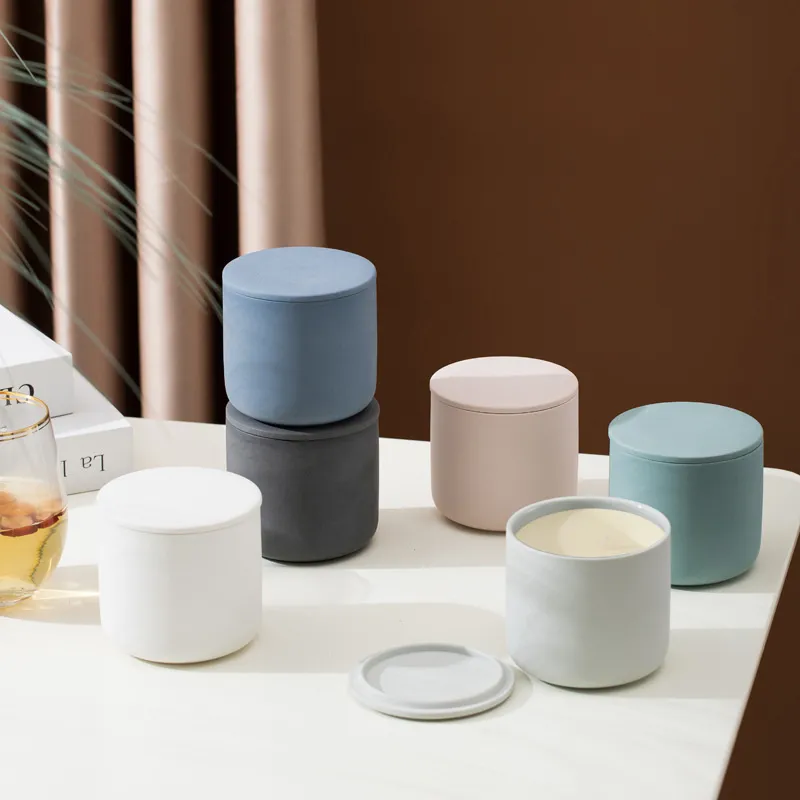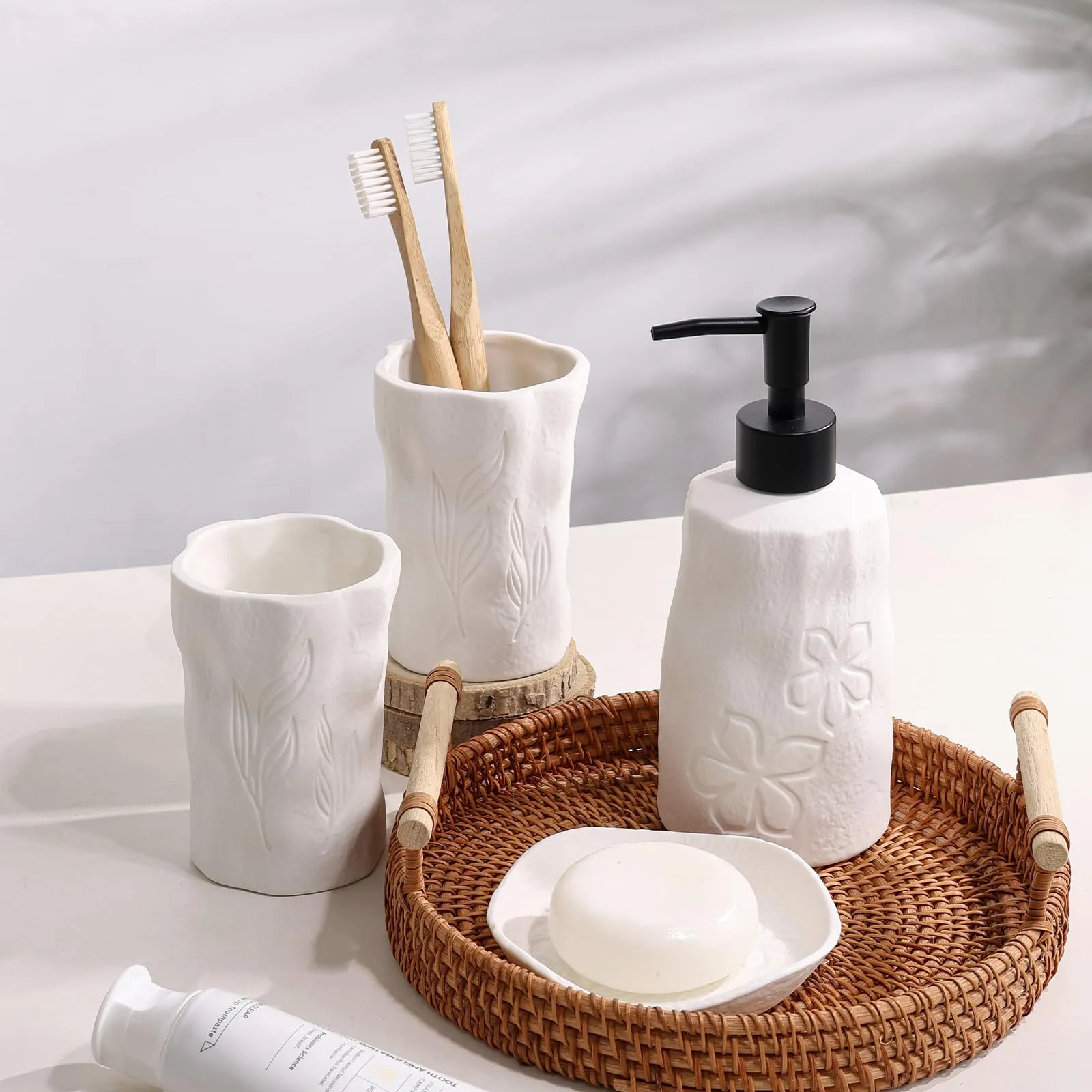
에서 진화 도자기는 모든 세라믹 제품에는 모양이나 기능뿐만 아니라 유약이라고 하는 반짝이고 단단하며 칠해진 코팅에 스토리가 담겨 있다고 믿습니다. 세라믹 머그잔에 담긴 커피를 마시거나 세라믹 용기에 담긴 양초를 녹일 때 유약은 경험을 훨씬 더 특별하게 만드는 데 중요한 역할을 합니다. 하지만 정확히 어떻게 작동할까요? 세라믹 글레이징의 매혹적인 세계에 대해 자세히 알아보세요.
글레이즈란 무엇인가요?
유약은 도자기를 구울 때 고열로 도자기 표면에 바르는 얇고 유리 같은 물질입니다. 광물, 실리카, 금속 산화물의 조합으로 만들어지며, 원시 점토를 사용 가능하고 방수 기능이 있는 멋진 예술 작품으로 변화시킵니다. 유약은 세 가지 중요한 기능을 수행합니다:
- 보호: 다공성 점토를 방수 및 얼룩 방지용으로 만듭니다.
- 내구성: 일상적인 착용을 위한 강도와 스크래치 방지 기능을 제공합니다.
- 미학: 색상, 텍스처 및 마감을 무제한으로 만들 수 있습니다.

유약의 화학
유약은 네 가지 주요 성분을 신중하게 측정한 혼합물입니다:
- 실리카(유리 형성 베이스): 녹은 상태에서는 유리처럼 반짝이는 외관을 형성합니다.
- 플럭스(용융제): 실리카의 녹는점을 낮춥니다(나트륨, 칼륨 또는 무연 대체 물질).
- 알루미나(안정제): 소성 중 유약이 흘러내리는 것을 방지합니다.
- 금속 산화물(착색제): 테라코타 빨강은 철, 파랑은 코발트, 초록은 구리, 보라색은 망간을 사용합니다.
이러한 성분을 조정하여 질감(광택, 무광택, 바삭바삭)과 다양한 클레이 바디와의 호환성을 제어합니다.

글레이징 프로세스: 날것에서 빛으로
준비:
- 유약을 가루로 만들어 물과 결합하여 액체 슬러리를 만듭니다.
애플리케이션:
- 담그기: 도자기를 유약에 담그기.
- 칫솔질/스프레이: 복잡한 디자인이나 레이어 효과.
해고:
- 비스크 발사: 초기 소성, 원시 점토 경화(유약 수용을 위한 다공성 표면).
- 글레이즈 소성: 고온 가마 소성(1,200~1,400°C)으로 유약을 녹여 매끄러운 유리층으로 만듭니다.
불이 붙으면 플럭스가 실리카를 녹이고 가스가 방출되며 금속 산화물이 열에 반응하여 색이 나타나는 등 화학 반응이 일어납니다. 결과는? 무독성, 식품 안전, 내구성이 뛰어나고 매끄러운 마감 처리.

일상적인 도자기에 유약이 중요한 이유
위생: 광택이 나는 비다공성 마감 처리로 식기류에 치명적인 박테리아 번식을 방지합니다.
다용도성: 컨트리 스타일의 석기 머그잔부터 모던한 욕실 세트까지, 유약은 어떤 스타일에도 잘 어울립니다.
사용자 지정: 진화 세라믹스에서는 캔들 항아리에 메탈릭 광택을 입히거나 오븐용 베이크웨어에 얼룩덜룩한 마감을 입히는 등 고객의 선호도에 맞게 유약을 변경합니다.
진화 도자기: 품질 제작, 우수성 제공
유약을 이해하는 것은 저희 경험의 일부일 뿐입니다. 유약은 신뢰할 수 있는 생활 도자기 제조업체 및 도매업체장인의 장인 정신과 최첨단 기술을 결합하여 제공합니다:
- 일상적인 기본 사항: 내구성이 뛰어난 세라믹 디너 플레이트와 그릇, 세라믹 베이킹 접시, 욕실 액세서리 세트.
- 프리미엄 아이템: 사랑스러운 캔들 항아리와 오븐에서 테이블로 옮길 수 있는 서빙 플레이트.
- 비공개 라벨: 비즈니스를 위한 맞춤형 글레이즈, 디자인 및 각인(개인 라벨, 대량 구매)을 제공합니다.
도자기 소매업체, 레스토랑, 디자이너 등 도자기의 형태와 기능, 마감이 돋보일 수 있도록 컨셉부터 배송까지 완벽한 서비스를 제공합니다.
잠재력을 탐색할 준비가 되셨나요? 다음 연락처로 문의하세요. 진화 도자기 지금 바로 다음 프로젝트를 논의하세요!




